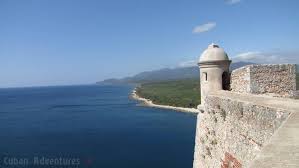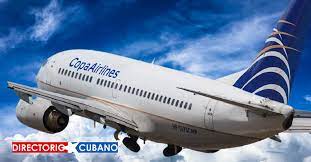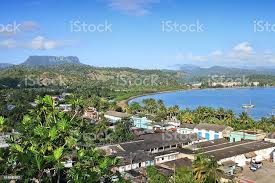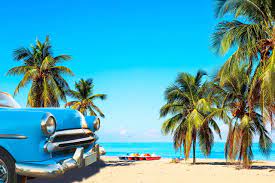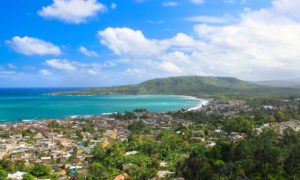LA FAMOSA “HABANA VIEJA” CUENTA SU HISTORIA. PATRIMONIO DE LA HUMANIDAD. FOTOS
La “Habana Vieja” (La Habana Vieja) es la zona más antigua de la capital cubana. En su conjunto presenta un trazado urbano similar a una gran lente biconvexa de unos 5 km² de superficie, donde aún quedan restos de las murallas que durante dos siglos la protegieron con una cerca de piedra y la configuraron como recinto defensivo militar. El derribo de la muralla comenzó en 1863.
La Habana Vieja (La Habana Vieja) contiene el núcleo de la ciudad original de La Habana. Las estrechas calles de La Habana Vieja contienen muchos edificios, que representan quizás hasta un tercio de los aproximadamente 3.000 edificios que se encuentran en La Habana Vieja. La Habana Vieja es Patrimonio de la Humanidad y el nombre también hace referencia a uno de los municipios de la ciudad de La Habana, Cuba, extendiéndose los límites de este último hacia el sur y el oeste más allá de la ciudad original.
LA HISTORIA DE LA HABANA VIEJA
Fundada por los españoles en 1519 en el puerto natural de la Bahía de La Habana, se convirtió en punto de parada de los tesoros de los galeones españoles cargados en la unión entre el Nuevo y el Viejo Mundo. En el siglo XVII fue uno de los centros de construcción naval más importantes. La ciudad fue construida en estilo barroco y neoclásico. Muchos edificios han caído en la ruina de más de 50 años de la administración de Castro, pero durante los últimos diez años, algunos han sido restaurados.
Es la ciudad vieja formada por el puerto, el centro oficial y la Plaza de Armas. La Habana Vieja fue destruida e incendiada por el corsario francés Jacques de Sores. El pirata tomó La Habana con facilidad, tras limitar a los defensores a unos pocos. Desde el incidente, los soldados españoles trajeron y comenzaron a construir fortalezas y murallas para proteger la ciudad. El Castillo de la Real Fuerza fue la primera fortaleza construida, iniciada en 1558, la construcción fue supervisada por el ingeniero Bartolomé Sánchez.
Muchos de sus puntos más importantes son:
EL MALECÓN, la avenida que bordea el malecón en la costa norte de La Habana, desde La Habana Vieja hasta el río Almendares.
EL CASTILLO DEL MORRO, la pintoresca fortaleza que custodia la entrada a la bahía de La Habana.
FORTALEZA DE LA CABAÑA, ubicada en el lado este de la Bahía de La Habana. La fortaleza más impresionante de la colonia española fue La Cabaña. Impresiona sus murallas del siglo XVIII, construidas al mismo tiempo que El Morro. Todas las noches a las 21 horas, soldados vestidos con trajes de la época tiran de ella “El Cañonazo de las Nueve”, (por arma de fuego de las nueve). Ha salido todos los días para avisar del cierre de las puertas de la muralla que rodeaba la ciudad.
LA FORTALEZA DE LA PUNTA o San Salvador, en la margen opuesta del Castillo del Morro, al comienzo de la curva de El Malecón, se levanta la fortaleza de menores dimensiones arquitectónicas. Fue construido en 1590, y en 1629 el Cabildo de La Habana decidió, para defender mejor el puerto, unirlo de noche con El Morro con una gruesa cadena que impedía la entrada de naves enemigas.
EL CASTILLO DE LA REAL FUERZA, la fortaleza o Castillo (literalmente) del Real Ejército es otro gran monumento que cierra la Plaza de las Armas. Fue la primera gran fortificación de la ciudad.
LA CATEDRAL DE SAN CRISTÓBAL, el edificio más destacado de la Plaza de la Catedral. La Catedral es una de las iglesias más bellas y sobrias del barroco americano.
EL CAPITOLIO NACIONAL, al estilo del Panteón (París), de aspecto similar al Capitolio de los Estados Unidos.
EL CENTRO GALLEGO, Parque Central, el Centro Gallego, de estilo neobarroco se constituyó como club social de emigrantes gallegos entre 1907 y 1914. Posteriormente en época castrista fue incautado y convertido en Gran Teatro de la Habana.
LA PLAZA DE ARMAS, principal plaza turística. El origen de su nombre es militar, ya que desde finales del siglo XVI aquí se desarrollaban ceremonias y actos militares.
GRAN TEATRO DE LA HABANA, edificio antiguo, es famoso sobre todo por el Ballet Nacional de Cuba y su fundadora, Alicia Alonso, de 100 años y ciega. A veces se lleva a cabo la Ópera Nacional. El teatro también es conocido como sala de conciertos, García Lorca, la más grande de Cuba.
EL PALACIO PRESIDENCIAL convertido tras la toma castrista del poder en “El Museo de la Revolución”.
LA BASÍLICA DE SAN FRANCISCO de La Habana, La Habana Vieja, El conjunto de la iglesia y convento de San Francisco de Asís, data de 1608, y fue reconstruido en 1737.
El municipio de “La Habana Vieja” es uno de los más pequeños de la ciudad, con una extensión geográfica de 4,32 km². Se divide en 7 Consejos Populares: Prado, Catedral, Plaza Vieja, Belén, San Isidro, Jesús María y Tallapiedra.
El Centro histórico de la ciudad abarca casi el 50% de la superficie municipal (2,14Km2). El municipio colina por el norte con el Malecón habanero; por el sur, con los municipios de San Miguel del Padrón y Diez de Octubre; por el este, con el municipio de Regla y la Bahía de La Habana; y por el oeste, con los municipios Centro Habana y Cerro.
THE FAMOUS “OLD HAVANA” TELLS ITS STORY. WORLD HERITAGE SITE. PHOTOS
The “Old Havana” (La Havana Vieja) is the oldest area of the Cuban capital. As a whole, it has an urban layout similar to a large biconvex lens of about 5 km² in area, where there are still remains of the walls that for two centuries protected it with a stone fence and configured it as a defensive military enclosure. The demolition of the wall began in 1863.
The Old Havana (La Habana Vieja) contains the nucleus of the original city of Havana. The narrow streets of Old Havana contain many buildings, representing perhaps up to a third of the approximately 3,000 buildings found in Old Havana. Old Havana is a World Heritage Site and the name also refers to one of the municipalities of the city of Havana, Cuba, with the limits of the latter extending to the south and west beyond the original city.
THE OLD HAVANA HISTORY
Founded by the Spaniards in 1519 in the natural harbor of the Bay of Havana, it became a stopping point for the treasures of Spanish galleons loaded on the junction between the New World and the Old World. In the 17th century it was one of the most important shipbuilding centers. The city was built in Baroque and Neoclassical style. Many buildings have fallen into the ruin of more than 50 years of the Castro administration, but for the past ten years, some have been restored.
It is the old city formed by the port, the official center and the Plaza de Armas. Old Havana was destroyed and burned down by the French corsair Jacques de Sores. The pirate took Havana with ease, after limiting the defenders of the few. Since the incident, Spanish soldiers brought and started construction fortresses and walls to protect the city. Castillo de la Real Fuerza was the first fortress built, started in 1558, the construction was supervised by the engineer Bartolomé Sánchez.
Many of its most important points are:
THE MALECÓN, the avenue that runs along the pier on the north coast of Havana, from Old Havana to the Almendares River.
EL CASTILLO DEL MORRO, the picturesque fortress that guards the entrance to the bay of Havana.
LA CABAÑA FORTRESS, located on the east side of the Bay of Havana. The most impressive fortress of the Spanish colony was La Cabaña. Impressed by its walls of the 18th century, built at the same time as El Morro. Every night at 9 pm, soldiers dressed in costumes from the period pull her “El Cañonazo de las Nueve”, (by firearm of the nine). He has left every day to warn of the closing of the gates of the wall that surrounded the city.
LA FORTALEZA DE LA PUNTA or San Salvador, on the opposite bank of the Castillo del Morro, at the beginning of the curve of El Malecón, stands the fortress of smaller architectural dimensions. It was built in 1590, and in 1629 the Cabildo of Havana decided, to better defend the port, to join it at night with El Morro with a thick chain that prevented the entry of enemy ships.
THE CASTLE OF THE ROYAL FORCE, the fortress or Castle (literally) of the Royal Army is another great monument that closes the Plaza de las Armas. It was the first large fortification in the city.
THE CATHEDRAL OF SAN CRISTÓBAL, the most outstanding building in the Plaza de la Catedral. The Cathedral is one of the most beautiful and sober churches of the American Baroque.
THE NATIONAL CAPITOL, in the style of the Pantheon (Paris), looking similar to the US Capitol.
THE GALICIAN CENTER, Central Park, the Galician Center, neobaroque style was established as a social club of Galician emigrants between 1907 and 1914. Later in the Castrista period was seized and converted into Gran Teatro de la Habana.
LA PLAZA DE ARMAS, main tourist plaza. The origin of its name is military, since from the end of the 16th century ceremonies and military events took place here.
GRAN TEATRO DE LA HABANA, an old building, is famous above all for the National Ballet of Cuba and its founder, Alicia Alonso, 100 years old and blind. Sometimes the National Opera is held. The theater is also known as concert hall, García Lorca, the largest in Cuba.
THE PRESIDENTIAL PALACE converted after the Castrist seizure of power in “The Museum of the Revolution”.
THE BASILICA OF SAN FRANCISCO de La Habana, Old Havana, The church and convent complex of San Francisco de Asís, dates from 1608, and was rebuilt in 1737.
The municipality of “Old Havana” is one of the smallest in the city, with a geographical extension of 4.32 km². It is divided into 7 Popular Councils: Prado, Cathedral, Plaza Vieja, Belén, San Isidro, Jesús María and Tallapiedra.
The historic center of the city covers almost 50% of the municipal area (2.14 km2). The municipality borders on the north with the Malecón habanero; to the south, with the municipalities of San Miguel del Padrón and Diez de Octubre; to the east, with the municipality of Regla and the Bay of Havana; and to the west, with the Centro Habana and Cerro municipalities.
Agencies/ Wiki/ OldHavanaHist./Extractos/ Excerpts/ Internet Photos/ Arnoldo Varona/ www.TheCubanHistory.com
THE CUBAN HISTORY, HOLLYWOOD.






